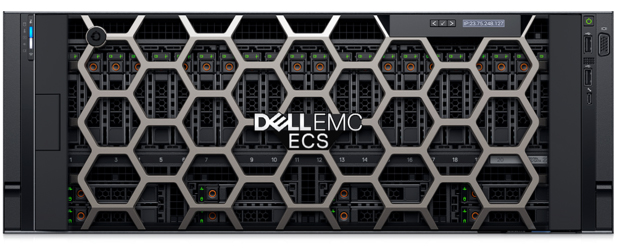Request a Demo
Join a 30 minute demo with a Cloudian expert.
Object storage systems are designed to store files and unstructured data in a flat, scalable architecture. Unlike traditional file systems that use hierarchy-based storage, object storage employs a flat structure where data is stored as objects. Each object has three main components: the data itself, metadata for defining the file, and a unique identifier.
This structure enables efficient data retrieval and high scalability, making it suitable for modern storage needs including cloud computing and media management. These tools allow users to store, access, and manage vast amounts of data without performance bottlenecks.
By eliminating the constraints of hierarchical storage systems, object storage tools provide seamless scalability. They are commonly used in cloud storage platforms, data archiving, and workflows requiring elasticity. Their reliability makes them useful in handling growing data demands, especially in industries like eCommerce, healthcare, and AI research.
In this article:
Object storage tools typically offer the following features.
Unlike traditional storage systems, object storage inherently scales horizontally, enabling organizations to add more capacity as needed without reconfiguring the existing setup. This is particularly useful for organizations that deal with exponential data growth. The distributed architecture of object storage ensures seamless expansion on-premises or in the cloud.
Users are not confined to pre-set storage limits, guaranteeing flexibility for scaling data volumes. This scalability also minimizes downtime. With regional or global expansion, companies can replicate data across geographically distributed locations for high performance and availability. Object storage is intended for large-scale, unstructured datasets like images, videos, and backups.
Object storage ensures data durability by distributing copies of objects across multiple nodes or locations. This redundancy guarantees that data remains accessible if part of the storage system fails. Many providers use erasure coding or replication mechanisms to prevent data loss. This ensures long-term resilience, critical for sectors like healthcare and finance.
Durability is coupled with automated recovery processes. If an object becomes corrupted or a node fails, the system can automatically reconstruct the missing data using redundant copies or data encoding techniques. This automation not only reduces risk but also removes the burden of manual intervention.
Access control in object storage ensures that only authorized users or systems can retrieve, modify, or delete stored data. Permissions are typically assigned at object, bucket, or user levels through access policies. Advanced tools also integrate security mechanisms like identity and access management (IAM) services, allowing organizations to enforce role-based access.
These granular controls protect sensitive information and help meet compliance regulations. Security measures such as encryption also support access control. Many object storage solutions offer server-side or client-side encryption to secure data at rest and in transit.
Object storage offers lifecycle management features to automate the movement of data based on policies. Data that is frequently accessed can be stored in high-performance storage tiers, while older, less critical data is moved to cost-efficient archival tiers. Policies are customizable, allowing organizations to optimize storage costs and resource usage.
This functionality is particularly useful for organizations navigating regulatory compliance or managing large, dynamic datasets. Lifecycle management reduces manual intervention by automatically transitioning data through its lifecycle stages. Administrators can define rules for when to delete outdated objects or shift them to less expensive alternatives.
Modern object storage tools integrate with a variety of applications and workflows. They often support APIs like the Amazon S3 API, the de facto standard for object storage, allowing interoperability with analytics software, data protection software, databases, and content delivery networks (CDNs). Such integration enables seamless application integration, as well as data sharing and analysis across platforms to boost productivity and simplify application workflows.
Compatibility with existing processes makes object storage a valuable addition to any IT infrastructure. In addition to API support, many solutions offer SDKs and plugins, enabling even tighter application integration. Developers leveraging these tools can build scalable applications with on-demand storage functionalities.

Cloudian HyperStore Object Storage Software is an enterprise-grade, software-defined storage platform designed for managing massive volumes of unstructured data at scale. Built for AI-ready performance and secure, hybrid-cloud integration, HyperStore empowers organizations to maintain full on-prem data sovereignty while delivering high throughput and bulletproof ransomware protection.
With native S3 API compatibility and unified file-object storage, it supports capacity-intensive workflows—like AI/ML, data analytics, and backup/archival—while offering flexible deployment options on commodity hardware or Cloudian appliances.
Key features include:


Red Hat Ceph Storage is a software-defined platform to support highly scalable storage environments, particularly for cloud-native applications and private cloud infrastructures. Integrated with Red Hat OpenStack Services on OpenShift, Ceph enables organizations to scale storage while simplifying operations and improving data protection.
Key features include:


Dell ECS is an object storage platform that supports a range of use cases, including AI, analytics, and archival storage, while offering S3 API compatibility and a globally distributed architecture. ECS enables unified namespace management and is available in multiple hardware configurations for different performance needs.
Key features include:


Scality ARTESCA is lightweight S3-compatible object storage software with a focus on cyber resilience. It integrates with Veeam for backup workflows and offers immutable storage with protection against ransomware threats. ARTESCA is suited for edge, core, and hybrid cloud environments and emphasizes simple management and rapid recovery.
Key features include:
 Conclusion
ConclusionObject storage solutions have become essential for managing the explosion of unstructured data across industries. Their flat architecture, scalability, and data durability mechanisms make them well suited for modern data-driven environments. By providing flexibility in integration, lifecycle management, and security, these tools enable organizations to handle diverse workloads efficiently while optimizing costs and ensuring compliance.